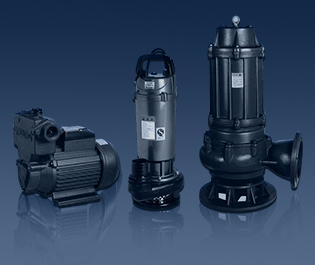Water pumps are essential components in residential, commercial, and industrial systems. From supplying fresh water in homes to circulating coolant in industrial processes, these pumps are the lifeblood of various critical applications. However, like all electric motors and electromechanical equipment, water pumps are susceptible to overheating, which can lead to operational inefficiencies, breakdowns, or even permanent damage. This is where thermal protection plays a crucial role.
Understanding the Risk of Overheating
Water pumps typically operate using electric motors, which generate heat during use. Under normal conditions, the heat is manageable, and ventilation or cooling systems keep it within safe limits. But certain situations can push the motor beyond its thermal capacity:
Blocked or restricted flow: If the inlet or outlet is obstructed, the pump may run dry or operate under higher pressure, increasing the motor’s load.
Continuous operation: Pumps running for extended periods without rest are at higher risk of overheating.
Ambient temperature: High external temperatures can reduce the cooling efficiency, especially in enclosed or poorly ventilated areas.
Voltage fluctuations: Under-voltage or over-voltage conditions can increase current draw, raising motor temperature.
Mechanical faults: Bearing failure, impeller wear, or frictional resistance can contribute to motor stress and overheating.
Without a protective mechanism, these conditions can lead to motor insulation breakdown, coil burnout, or mechanical failure—all of which reduce the pump’s lifespan and increase maintenance costs.
What is Thermal Protection?
Thermal protection refers to devices or systems designed to monitor the temperature of a water pump’s motor and prevent damage by interrupting the power supply when overheating is detected. These protective systems are generally integrated into the motor or installed externally. The main types of thermal protection include:
Thermal Protectors (Bimetallic Switches): Compact and cost-effective, these devices use bimetallic strips that open the electrical circuit when a specified temperature threshold is exceeded. Once the motor cools down, the strip returns to its original position, allowing normal operation to resume.
PTC Thermistors (Positive Temperature Coefficient Sensors): These sensors change resistance based on temperature. When the motor temperature rises, the resistance increases sharply, triggering a control circuit to shut down the pump or issue an alert.
NTC Thermistors: These function similarly to PTCs but with a negative coefficient—resistance decreases as temperature rises. They're often used in more sophisticated systems with real-time temperature monitoring.
Embedded Temperature Sensors: Some advanced water pumps have integrated digital temperature sensors that continuously monitor the motor’s thermal state and feed the data to a smart controller.
Benefits of Thermal Protection for Water Pumps
Implementing thermal protection in your water pump system offers a wide range of advantages:
1. Extended Equipment Lifespan
By preventing excessive temperatures that damage the motor windings and insulation, thermal protection ensures the pump runs within safe thermal limits. This significantly extends the lifespan of the pump.
2. Reduced Maintenance Costs
Overheating often results in costly repairs or motor rewinding. By proactively stopping the motor when overheating occurs, thermal protection eliminates many common causes of pump failure, reducing the need for frequent servicing.
3. Minimized Downtime
Unplanned breakdowns can halt critical operations, especially in industrial or agricultural applications. Thermal protection helps avoid such interruptions by triggering timely shutdowns before severe damage occurs, allowing for faster recovery.
4. Energy Efficiency
Overheating motors tend to draw more power and operate inefficiently. Keeping the motor within optimal temperature ranges ensures that energy is used efficiently, contributing to lower utility bills and reduced environmental impact.
5. Safety
In extreme cases, overheating can lead to fires or electrical hazards. Thermal protectors act as a critical safety feature, cutting power to prevent dangerous failures.
Applications Across Industries
Thermal protection isn’t just beneficial for one type of water pump. It’s vital in a variety of contexts, including:
Domestic water supply systems: Protecting home pumps from dry-run conditions or blocked pipes.
Irrigation systems: Ensuring uninterrupted operation in agricultural fields, especially in high-heat climates.
HVAC systems: Maintaining circulation pumps in heating and cooling units.
Industrial process pumps: Preventing overheating due to long operational cycles or high-pressure demands.
Wastewater treatment: Where high solids content or pump clogging can increase motor strain.
Choosing the Right Thermal Protection
Selecting the right thermal protector depends on the type, size, and application of your water pump. Important considerations include:
Operating voltage and current: Match the protector’s rating to your pump’s electrical characteristics.
Response temperature: Choose a threshold appropriate for your motor’s thermal tolerance.
Reset type: Decide between auto-reset and manual-reset options based on the application’s safety and reliability requirements.
Environmental conditions: Consider protection against moisture, dust, and chemical exposure.
Collaborating with a reputable supplier can help ensure compatibility and reliability. For example, brands like Saftty offer a range of thermal protectors specifically designed for electric motors in water pumps, known for their compact design, rapid response time, and compliance with international safety standards.
Thermal protection is not just an add-on—it’s a fundamental component for ensuring the reliable and efficient operation of water pumps. Whether you're a homeowner looking to protect a well pump or an engineer managing an industrial pumping station, integrating the right thermal protection can save time, money, and resources. With smart implementation, you’ll benefit from smoother operation, lower maintenance costs, and enhanced equipment longevity.
Investing in thermal protection today is a smart step toward securing your pump’s performance for the long run.













 中文
中文 English
English Deutsch
Deutsch Italiano
Italiano 한국어
한국어 にほんご
にほんご


